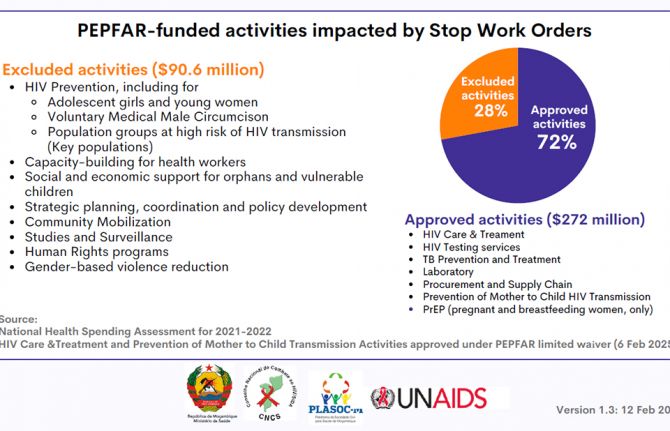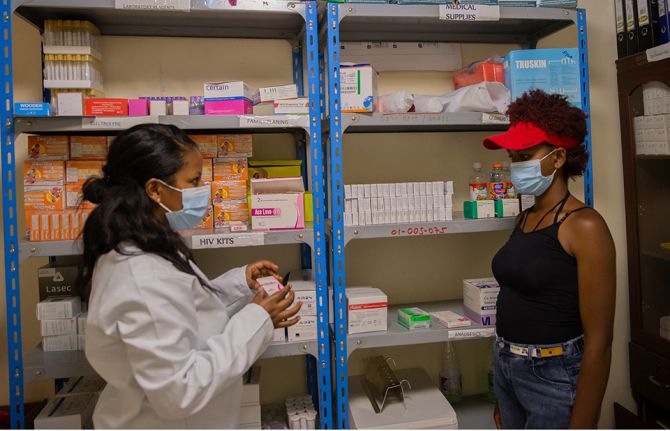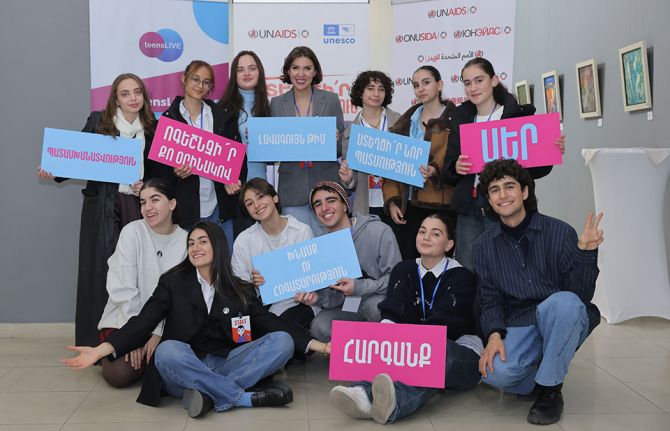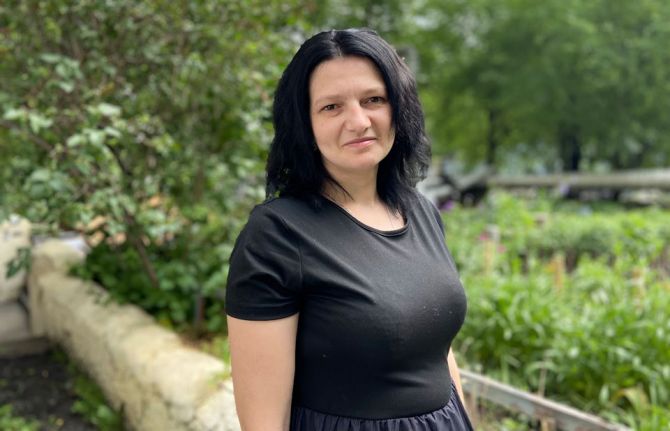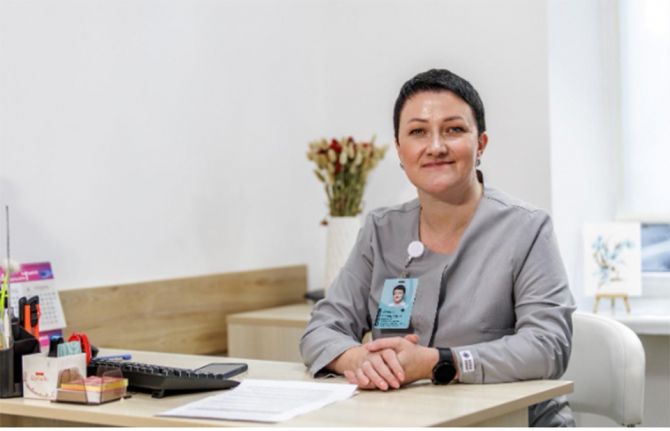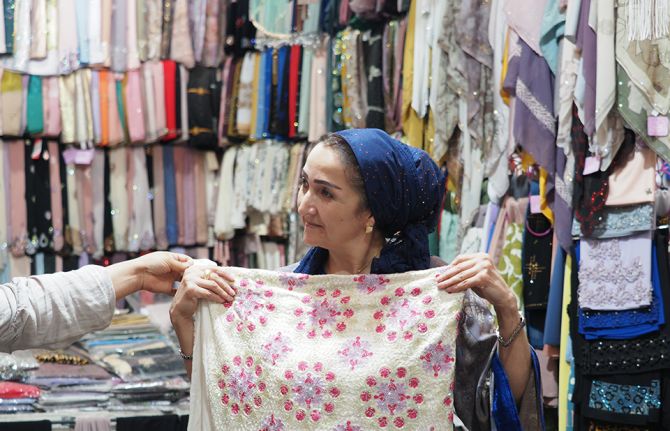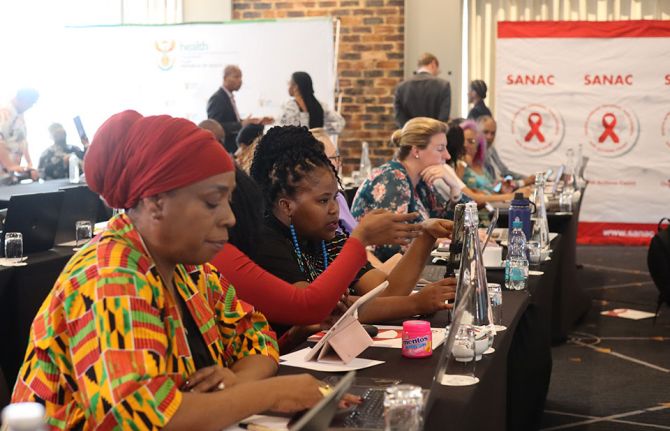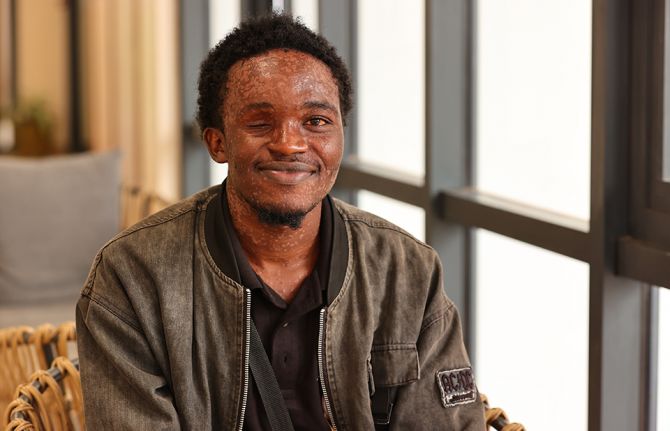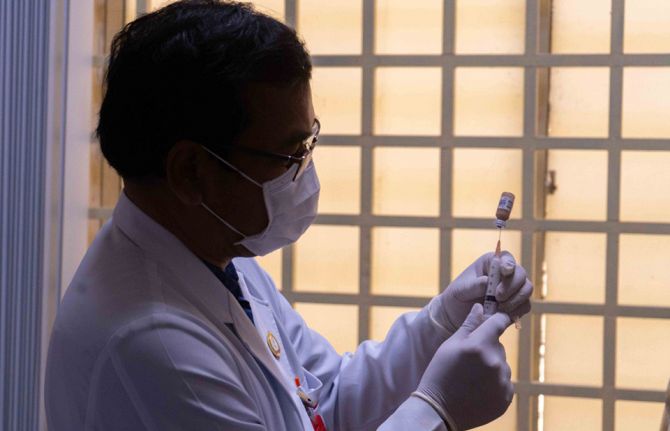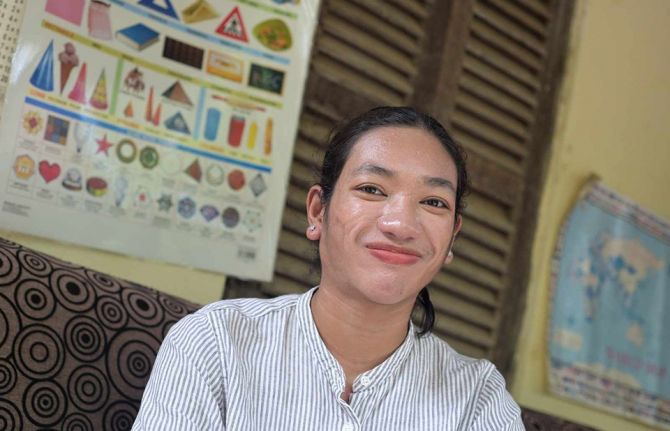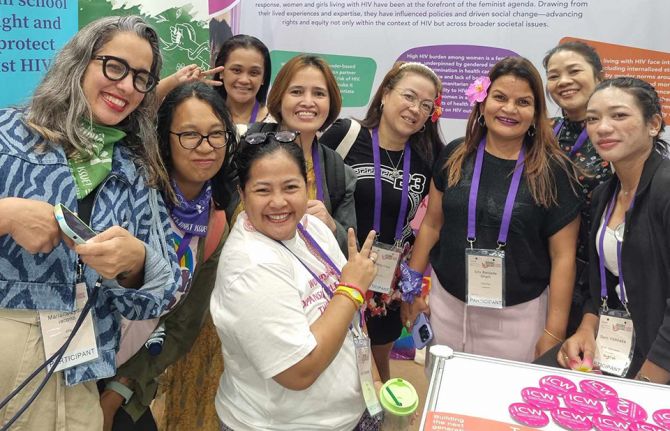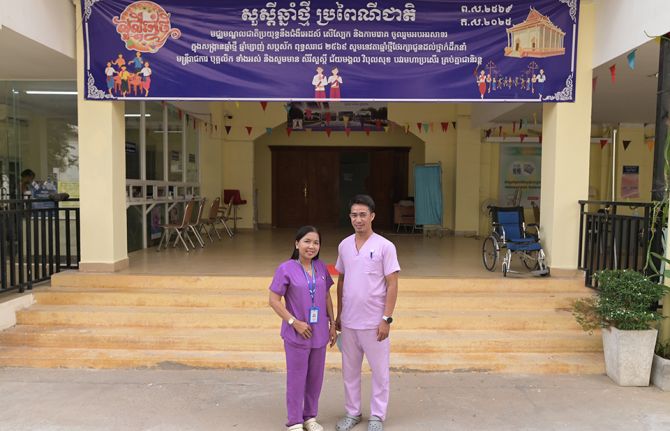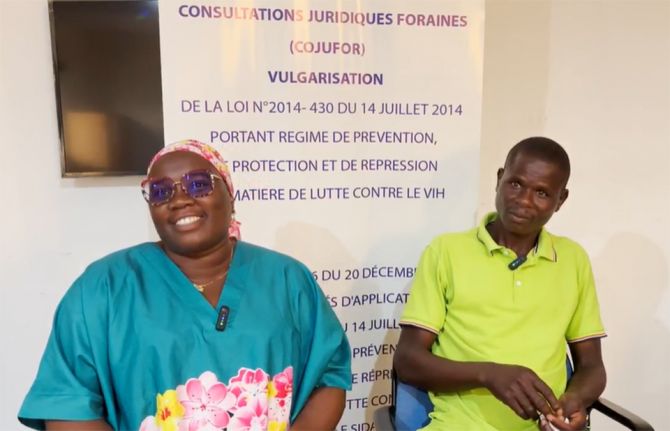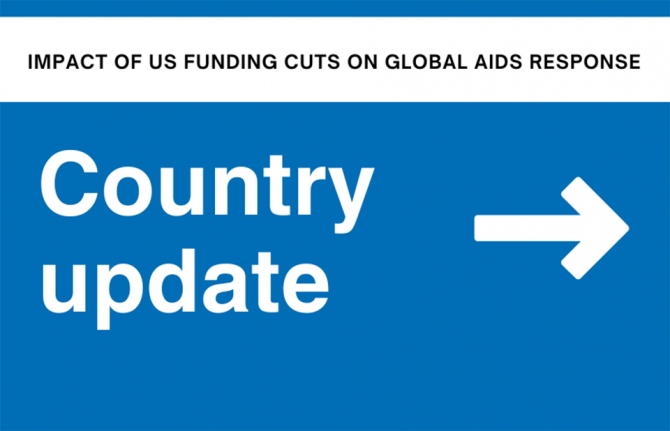
Update
UNAIDS Scientific and Technical Advisory Committee calls for HIV testing revolution
13 April 2017
13 April 2017 13 April 2017The participants of a meeting of the UNAIDS Scientific and Technical Advisory Committee (STAC) have called on UNAIDS to lead global efforts to galvanize an HIV testing revolution. The target is to achieve 90% of people living with HIV knowing their HIV status by 2020. In 2015, only 60% of people living with HIV knew their HIV status.
In a mid-term review of progress towards the 90–90–90 targets, held on 9 and 10 April in Geneva, Switzerland, the participants heard that late HIV diagnosis represents the single greatest barrier to increasing rates of HIV viral suppression globally. New testing technologies have emerged, but programmes must reach the people who need HIV testing services.
Key barriers to HIV testing uptake include lack of individual awareness of risk, stigma, legal and structural barriers, associated costs such as travel to facilities and the perception that there is little benefit from diagnosing HIV infection if no symptoms are present. The participants heard that many people avoid seeking HIV testing services at health facilities, since both travel and waiting times can often be long. Barriers to testing are often experienced by young people, men and members of key populations.
The participants agreed that political and financial support for HIV testing must be significantly increased and that the central focus of HIV testing services should be moved from the health facility to the community. Community workers have a critical role in scaling up these community-centred strategies. The STAC recommended that UNAIDS develop a road map for the HIV testing revolution, for review and comment by the STAC at its next meeting in July.
The STAC recommended that UNAIDS emphasize leveraging the 90–90–90 targets to better link the HIV response to the broader agenda for sustainable health. It was noted that HIV testing services provide a platform for screening for other health problems. Likewise, momentum towards the 90–90–90 targets also offers opportunities to address health workforce shortages.
Quotes
We need to be discontent. Although we have made considerable progress in our response to AIDS, we have much more to do, especially for those who are being left behind.
The HIV testing revolution must be a major element of our agenda. We must do a better job of reaching young men with HIV testing services, and we need to move HIV testing from the facility to the community.
We need to increase the pace of treatment scale-up. We added 2.4 million new people on HIV treatment in 2015, in both 2013 and 2014 the increase was 2.2 million. If we could increase annual enrolment in HIV treatment by 3 million, we could reach our global goal of having 30 million people on HIV treatment by 2020.
The rate of complete viral suppression in the population is the ultimate indication of how well we are doing with 90–90–90. We need to prioritize, ensuring that people on antiretroviral therapy receive viral load monitoring.
If we continue with the current rate of testing in Zimbabwe, that will not get us to the first 90. However, modelling indicates that we can reach the first 90 if we implement new forms of HIV testing, such as HIV self-testing.
Males and younger people have much lower rates of viral suppression in Malawi. Much of that is driven by their lower rates of antiretroviral therapy uptake.
Related

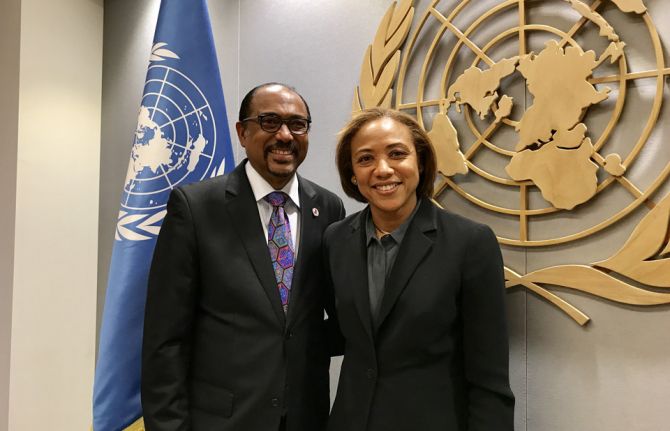
Update
No time for complacency
21 April 2017
21 April 2017 21 April 2017“No time for complacency,” is one of the key messages from United Nations Secretary-General António Guterres on the need to accelerate progress to end the AIDS epidemic as part of the Sustainable Development Goals. The UN Secretary-General met with the Executive Director of UNAIDS, Michel Sidibé at the United Nations headquarters in New York on 18 April 2017.
They discussed a wide range of issues, including the unprecedented progress made to date and how to overcome the remaining challenges. They also talked about the millions of lives saved through the commitment of the United States of America’s President’s Emergency Plan for AIDS Relief programme and the Global Fund to Fight AIDS, Tuberculosis and Malaria.
“It is an honour to serve Secretary-General Guterres and to have his strong support to Fast-Track the end of AIDS,” said Mr Sidibé.
While in New York, the Executive Director also met with the UN Deputy-Secretary-General, Amina Mohammed, on the UN reform agenda and with the President of the UN General Assembly Peter Thomson on the need for innovation in global health. He also met with Michelle Gyles McDonnough the new Director of the Sustainable Development unit.
Related


Update
The living legacy of the Global Plan
20 April 2017
20 April 2017 20 April 2017The Journal of Acquired Immune Deficiency Syndromes (JAIDS) has released a special supplement on the incredible journey of the Global plan towards the elimination of new HIV infections among children by 2015 and keeping their mothers alive (Global Plan), which documents the history of the Global Plan and outlines what the future holds as efforts to end AIDS among women, children and adolescents accelerate.
The Global Plan began with the simple but powerful premise that “children everywhere can be born free of HIV and their mothers remain alive”. Although this goal may not seem radical today, when the Global Plan was launched it seemed unimaginable.
In 2009, there were 270 000 new HIV infections among children in the 21 Global Plan priority countries, only 36% of pregnant women living with HIV had access to recommended antiretroviral medicines to prevent transmitting the virus to their child and just 15% of children living with HIV had access to life-saving antiretroviral therapy.
It was in response to this injustice that UNAIDS and the United States President's Emergency Plan for AIDS Relief (PEPFAR) led a global effort to stop new HIV infections among children and ensure their mothers stay alive and healthy. On 9 June 2011, during the United Nations High-Level Meeting on AIDS, the Global Plan was formally launched.
The global community's response to this call to action was immediate. PEPFAR and private sector partners pledged funding for the Global Plan and countries, civil society, the private sector, the faith-based community, networks of people living with HIV, and international organizations all joined forces to chart a bold course for a country-led movement to create an AIDS-free generation.
The Global Plan was transformative and the progress which ensued, remarkable. The Global Plan helped to drive a 60% reduction in new HIV infections among children, avert 1.2 million new infections among children and halve the number of AIDS-related deaths among women of reproductive age in 21 priority countries in Africa from 2009 to 2015.
Over the course of the Global Plan, seven countries reduced new HIV infections among children by more than 70% (Uganda by 86%, Burundi by 84%, South Africa by 84 %, Swaziland by 80%, Namibia by 79%, Mozambique by 75% and Malawi by 71%).
However, progress has been uneven. In a number of countries (Angola, Côte d'Ivoire, and Nigeria), new paediatric HIV infections declined by less than 40% over this same period. Every year, 110 000 children are still acquiring HIV in the 21 Global Plan priority countries, and 150,000 worldwide. More than half of new paediatric HIV infections occur during the breastfeeding period. Testing and treatment coverage among children remains too low and alarming numbers of adolescent girls and young women are still becoming infected.
This is why, in June 2016, PEPFAR and UNAIDS once again joined forces and launched Start Free Stay Free AIDS Free to accelerate the momentum driving this ambitious agenda, bring even greater urgency and focus to the work ahead and galvanize global solidarity around a shared and ambitious agenda to end AIDS among children, adolescents and young women.
Quotes
“The articles that comprise the JAIDS supplement trace the tremendous evolution and impact of the Global Plan across various domains, highlighting examples of bold leadership, innovation, and activism. They also capture the growth of a learning agenda, continually building on new developments in science, and translating these into lifesaving services. Together, they represent a living legacy of what has been done—and what must still be done—to reach our ultimate goals: controlling and then, finally, ending the AIDS epidemic as a public health threat by 2030 within the framework of the Sustainable Development Goals.”

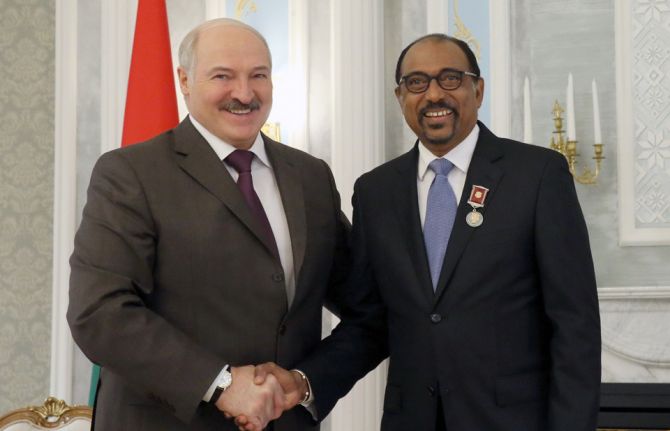
Update
UNAIDS Executive Director meets Alexander Lukashenko, President of Belarus
13 April 2017
13 April 2017 13 April 2017Michel Sidibé, UNAIDS Executive Director, met with the President of Belarus, Alexander Lukashenko, at the end of his first official visit to Belarus. During the meeting, Mr Sidibé highlighted the President’s leadership on HIV as critical to the country’s significant progress in the AIDS response.
President Lukshensko acknowledged the strategic partnership between Belarus and UNAIDS as being essential to the progress made in the country. In 2017, UNAIDS will commemorate 20 years since the opening of its office in Minsk.
Mr Sidibé called on President Lukashenko to build the momentum and put Belarus on the Fast-Track to end AIDS, as was called for by the 2016 United Nations Political Declaration on Ending AIDS. Mr Sidibé encouraged President Lukashenko to continue to scale up the successful HIV prevention programmes among populations at higher risk of HIV infection and make Belarus the first country in eastern Europe and central Asia to end AIDS.
The President presented the Medal of Francysk Skaryna to Mr Sidibé in recognition of his contribution to the global AIDS response and the development of health care in Belarus.
Belarus has been certified by the World Health Organization as having eliminated mother-to-child transmission of HIV. It has full coverage of antiretroviral therapy for all women and children living with HIV and increased government funding for the national AIDS response to cover more than 80% of all AIDS expenditures.
Quotes
Without your support in the fight against this disease, we would have never achieved these results
I have come to see first-hand the achievements of Belarus and to highlight its successes in the AIDS response. I am honoured to receive the Medal of Frantsysk Skaryna from the President of Belarus. Belarus is demonstrating that 90–90–90 and the end of AIDS are within reach.
Region/country
Related

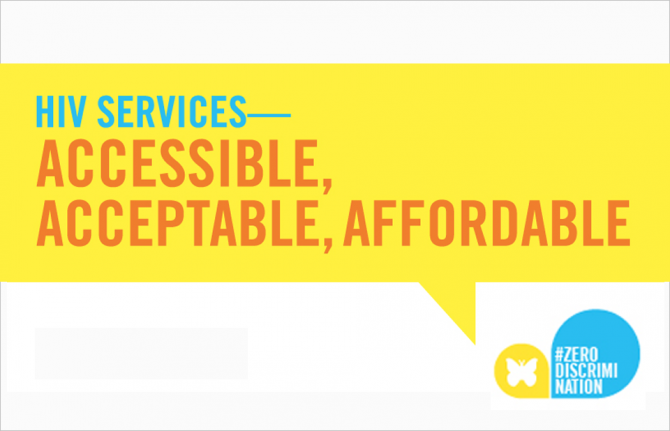
Update
Improving the knowledge base for #ZeroDiscrimination in health care
07 April 2017
07 April 2017 07 April 2017People around the world continue to face barriers to accessing quality health care and enjoying the highest attainable standard of health, despite the right to be free from discrimination being enshrined in multiple human rights treaties, national laws and constitutions.
Why this occurs varies between countries and communities, but some barriers are present everywhere. Evidence shows that people are often stigmatized and discriminated in health-care settings because of their HIV status, race, age, sex, sexual orientation or gender identity, or an intersection of many other grounds.
There are several initiatives that aim at addressing HIV-related discrimination, but they often lack a concerted approach. To bring together current efforts from all relevant stakeholders to ensure that everyone, everywhere, enjoys health services without discrimination, UNAIDS and the Program on Global Health and Human Rights, University of Southern California, have partnered to map out existing tools to assess and address HIV-related stigma and discrimination in health care.
The web-based repository and tool finder at www.zeroHIVdiscrimination.com will enhance knowledge of existing tools and facilitate their use.
Quotes
"UNAIDS reiterates its commitment to addressing the gaps in social justice and inclusion that are precluding efforts to end the AIDS epidemic. HIV-related stigma and discrimination in health-care settings have substantial negative impacts on people’s quality of life and use of services as well as on the overall HIV response.”
“Recent global targets and commitments on HIV-related stigma and discrimination in health-care settings illustrate increasing understanding that we cannot successfully address HIV without addressing stigma and discrimination in health care. Making accessible the range of available tools to facilitate this work is an important contribution to the HIV response at the local, national and global levels.”



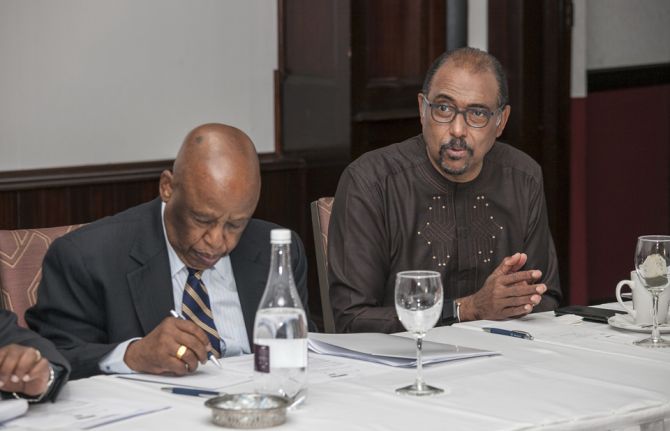
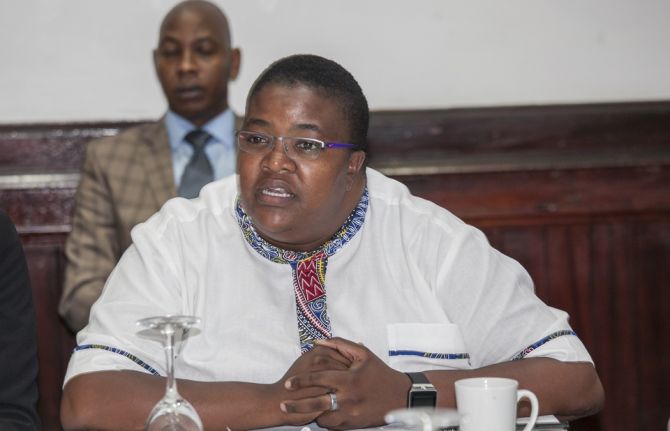
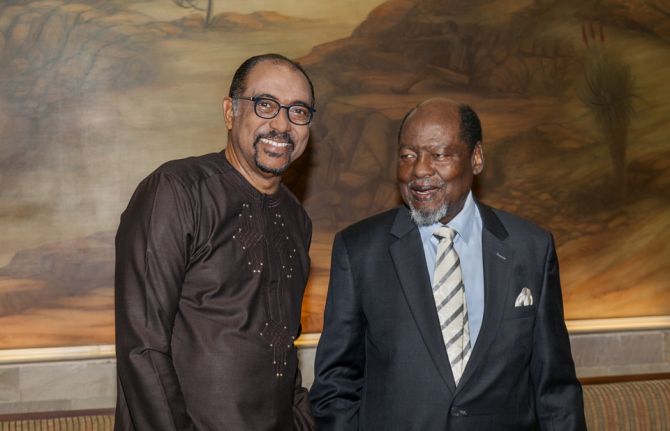

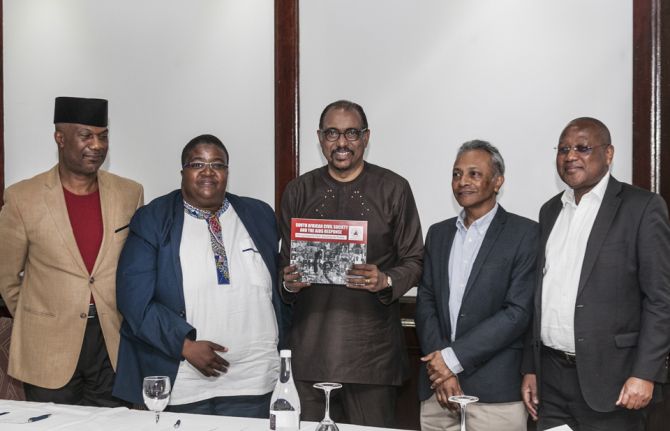
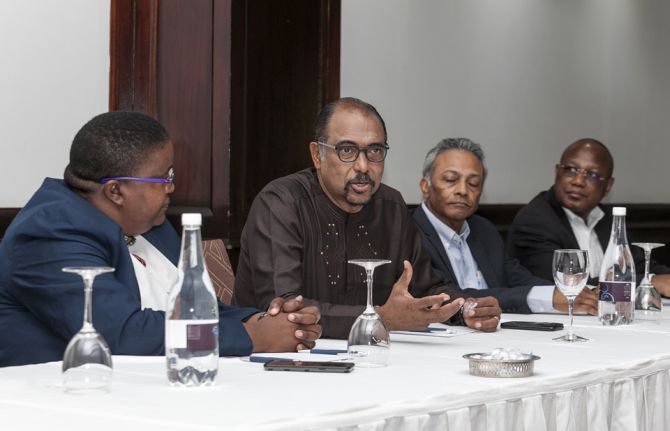
Update
Championing access to HIV services for key populations in Africa
03 April 2017
03 April 2017 03 April 2017The AIDS response in Africa has come a long way and the continent is seeing results in many areas, including the dramatic reduction in the number of babies being born with HIV and an equally dramatic increase in access to HIV treatment. Nevertheless, inequalities in access to health, especially for key populations and adolescent girls and young women, remain a major barrier to ending AIDS as a public health threat in Africa by 2030.
These issues were the focus of a high-level dialogue between the Champions for an AIDS-Free Generation in Africa, a distinguished group of former presidents and influential African leaders, UNAIDS Executive Director Michel Sidibé and civil society representatives in Pretoria, South Africa, on 30 March.
The Royal Commonwealth Society, which promotes the values of the Commonwealth of Nations, has found that 41 of its 53 member states criminalize consensual same-sex relationships in some way. Across these member states, many of which are in Africa, lesbian, gay, bisexual, transgender and intersex people face high levels of discrimination, harassment and violence in their everyday lives.
Adolescent girls face a higher risk of HIV infection, with those in the age group 15–19 being the only age group for which AIDS-related deaths are increasing in sub-Saharan Africa. In 2015, an estimated 64% of all adolescents aged 15–19 years living with HIV in the region in 2015 were girls.
Participants in the dialogue made it clear that removing barriers that are holding back progress in the AIDS response, such as punitive laws, prosecutions, policies and practices that block access to HIV services, is critical to reaching the people being left behind.
The round-table dialogue was convened by the Champions, the Royal Commonwealth Society, Access Chapter 2, the Kaleidoscope Trust and the African Think Tank on HIV, Health and Social Justice. It is one of the advocacy mechanisms and platforms that these partners will use to respond to these complex issues.
Quotes
“If ending AIDS by 2030 is to be realized, we have to see what we are not doing. We need to include everyone and leave no one behind in our HIV prevention and treatment efforts.”
“We need to combine the different solutions that we have for the AIDS response into a cross-cutting approach to achieve inclusiveness, social justice and conducive policies.”
“When we confront the realities of every citizen in our countries we must take rights, religion and culture into account when we have our conversations.”
Region/country

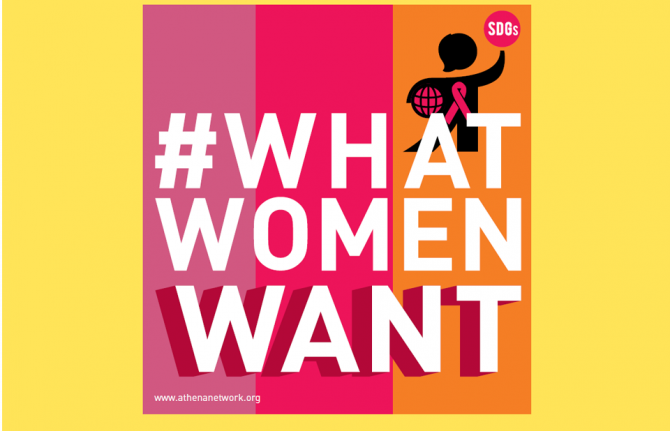
Update
#WhatWomenWant: HIV prevention that works for adolescent girls and young women
06 April 2017
06 April 2017 06 April 2017UNAIDS is championing the inaugural #WhatWomenWant Day on 6 April. Led by the Athena Network, the day sees the launch of the report #WhatWomenWant: a transformative framework for women, girls and gender equality in the context of HIV and sexual and reproductive health and rights.
The report is based on six months of consultations with adolescent girls and young women around the world. It calls for sustained investment in women-led partnerships and civil society in order to advance gender equality and meet the ambitious targets set in the Sustainable Development Goals.
#WhatWomenWant is an online campaign that uses social media to amplify the voices of young women, allowing them to share expertise and life experiences, explore solutions and build strengthened networks across gender-related issues, sectors and movements.
To get engaged, follow @NetworkAthena and use the hashtag #WhatWomenWant.
UNAIDS has supported this effort and continues to work with a broad range of partners, including governments, civil society, the United States President’s Emergency Plan for AIDS Relief and the Global Fund to Fight AIDS, Tuberculosis and Malaria, to ensure that women and girls everywhere are empowered and enabled to protect themselves against HIV and that all women and girls living with HIV have immediate access to treatment.
Quotes
“UNAIDS welcomes this creative and participatory platform, led by the Athena Network, empowering adolescent girls and young women and amplifying their message. Let’s build on the knowledge and solutions of adolescent girls and young women and make sexual and reproductive health, including HIV prevention and treatment services, work for them and with them.”
“Policy-makers have always been able to know what women need, but now it is time for us to speak out openly about what women want.”
“Adolescent girls and young women need to have the information, safety, freedom, education, rights and autonomy to make healthy and informed decisions about their health and the trajectory of their lives.”
Partners

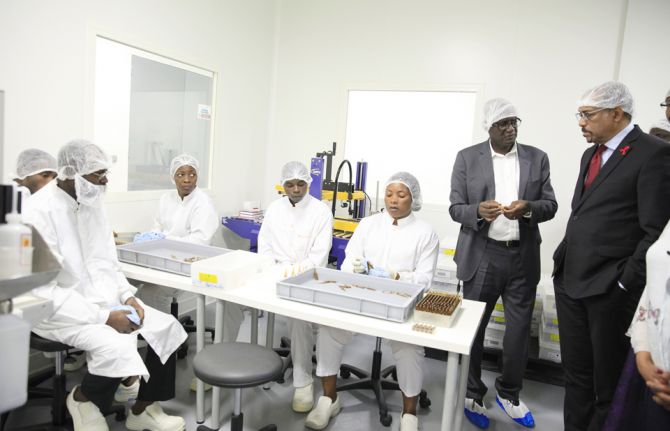
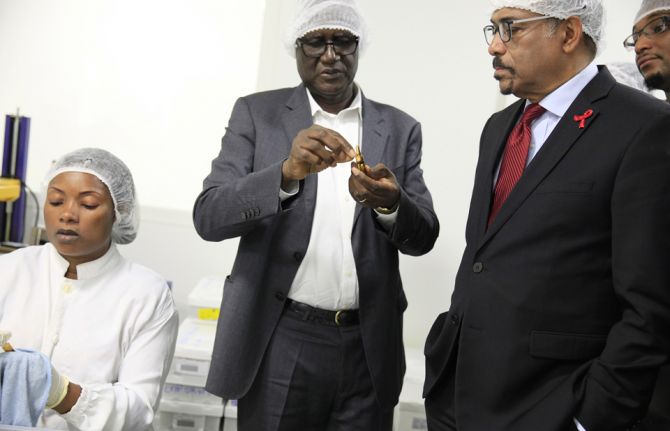

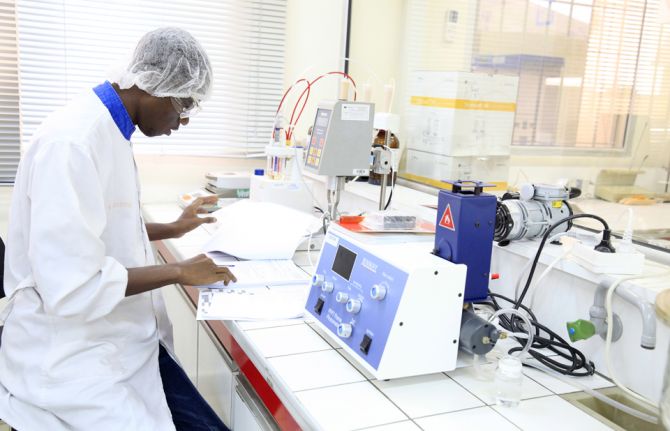
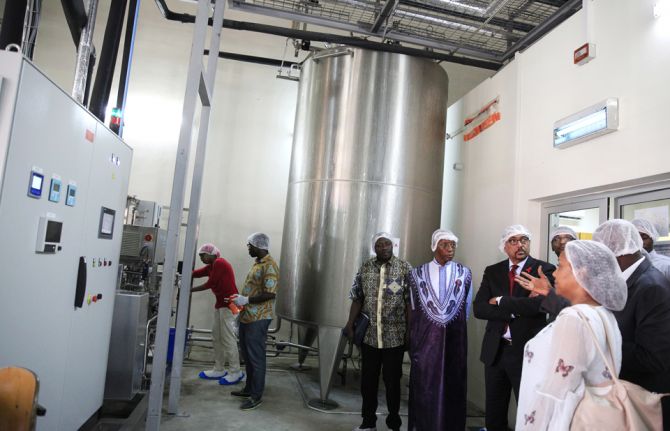
Update
Believing in African pharma
29 March 2017
29 March 2017 29 March 2017UNAIDS Executive Director Michel Sidibé visited a generic medicine manufacturer in Abidjan, Côte d’Ivoire, on 24 March following his attendance at a meeting of francophone mayors on HIV. CIPHARM, the leading pharmaceutical company in Côte d’Ivoire, produces a number of medicines, ranging from antihistamines to antibiotics. During the visit, Ibrahim Diawara, the Chief Executive Officer of CIPHARM, told Mr Sidibé that the company wanted to begin the production of antiretroviral medicines.
UNAIDS has been encouraging the local production of antiretroviral medicines in Africa, the continent with the highest HIV burden. In western and central Africa, three out four people living with HIV do not have access to treatment.
Mr Sidibé committed UNAIDS’ help for CIPHARM to fulfil the norms of the World Health Organization for antiretroviral therapy production and to promote regional and local production.
Since 2014, the Economic Community of West African States has pursued a Regional Pharmaceutical Plan to strengthen its pharmaceutical industry and ensure the production of quality, safe and affordable medicines accessible by the region’s population.
UNAIDS is working with countries to ensure that, by 2020, 30 million people living with HIV are accessing treatment.
Quotes
“The growth of new pharmaceutical industries like CIPHARM will save lives and deliver measurable returns through increased productivity, longevity and lower long-term health-care costs in the long run. It is a win–win for all.”
“We have been interested for a long time to manufacture antiretroviral medicines locally in order to save lives in Côte d’Ivoire and the Economic Community of West African States. We are determined it will contribute to eliminating the AIDS epidemic by 2030.”
Region/country

Update
Nordic countries come together to advance progress on ending AIDS
01 April 2017
01 April 2017 01 April 2017High-level representatives of Denmark, Finland, Norway and Sweden came together on 28 March to discuss how to accelerate efforts in implementing the UNAIDS Fast-Track approach to ending the AIDS epidemic as a public health threat by 2030. During the Nordic consultation, hosted and chaired by State Secretary Ulrika Modéer, from the Ministry of Foreign Affairs in Sweden, the participants discussed obstacles and opportunities for progress towards achieving the Sustainable Development Goals.
The Executive Director of UNAIDS, Michel Sidibé, shared his vision and perspective on the opportunities towards ending AIDS and spoke about the recent reform of UNAIDS. The link between sexual and reproductive health and HIV was discussed, as was the need for greater efficiencies, reform in the global health architecture in order that health becomes more effective and a reduction of fragmentation.
Quotes
“UNAIDS has always been an entry point for tackling HIV as an epidemic, but, more importantly, issues of human rights and gender inequality in a pragmatic and meaningful way for people.”
“For Norway, the mission of UNAIDS remains important. We need to ensure that UNAIDS continues to deliver critical results in a situation of budgetary constraints and increased insecurity of funding.”
“In the Sustainable Development Goals era, we need structures that are innovative and bring greater coordination across issues, and UNAIDS is the model for this. Empowerment of women and girls is a priority for Finland. We believe UNAIDS has an important role to play in promoting sexual and reproductive health and rights in its work.”
“We need to make sure that the whole is more than the sum of its parts. Reforms recommended by the Global Review Panel will reinvigorate the Joint Programme model and position the Joint Programme at the centre of system-wide United Nations reform.”
“UNAIDS works closely with its partnerships to accelerate change to end AIDS and achieve the Sustainable Development Goals. A sustainable agenda needs a sustained UNAIDS.”

Update
Sweden—championing efforts to end AIDS
01 April 2017
01 April 2017 01 April 2017The global response to HIV has averted almost 9 million deaths since 2000, when the Millennium Development Goals (MDG) were set. Despite such progress, AIDS is the leading cause of death among women aged 15–49, the sixth leading cause of death among adolescents and a leading cause of death among children worldwide.
Recognizing the impact of HIV on health and development, in 2016 United Nations Member States adopted a Political Declaration on Ending AIDS to advance progress towards ending AIDS by 2030.
Essential to these efforts will be achieving the 90–90–90 targets, whereby, by 2020, 90% of people living with HIV know their HIV status, 90% of people who know their HIV-positive status are accessing treatment and 90% of people on treatment have suppressed viral loads.
In October 2016, Sweden announced that it was the first country to reach the 90–90–90 targets, having reached them in 2015. Today, Sweden estimates that 90% of people living with HIV in Sweden know their HIV status, 97% of people who know their HIV-positive status are accessing treatment and 95% of people living with HIV who are accessing treatment have viral suppression.
Sweden remains a political champion and supporter of HIV efforts globally. Sweden is also a key donor to UNAIDS and the Global Fund to Fight AIDS, Tuberculosis and Malaria. From 26 to 28 March, UNAIDS Executive Director Michel Sidibé visited Sweden, at the invitation of State Secretary Ulrika Modéer, to discuss how the response to HIV can be a catalyst for accelerating progress towards achieving the Sustainable Development Goals.
In meetings with a series of key political and technical stakeholders, as well as civil society organizations working on HIV, the participants stressed that HIV prevention must be expanded to end AIDS. They also stressed that HIV programmes must be integrated, brought to scale and implemented to maximum effect, ensuring they reach the people most affected by HIV.
There was consensus that a single disease approach to HIV is inadequate to reach the Sustainable Development Goals and that there is a need for an approach that looks on health not as an outcome but as a prerequisite for development and sustainability.
Quotes
“The HIV epidemic has been a cause and consequence of gender inequality for 30 years, but the HIV response is the conduit for transformative change and progress.”
“We need a systems change and a bold stance on structural issues, such as human rights and gender. Now is the time to ensure that we have a global health architecture fit for the Sustainable Development Goals era. UNAIDS has a key leadership role to play because of the intersection of HIV with health and development.”
“Broad-based partnerships beyond the HIV movement are key if we are to achieve the Sustainable Development Goals . We need to bring our prevention and sexual and reproductive health and rights efforts to scale.”
“We need a fourth 90, a 90 for quality of life of people living with HIV. People living with HIV in Sweden have a high quality of life, but some key populations continue to face policy and service barriers.”

